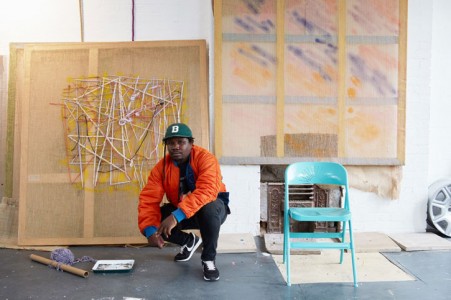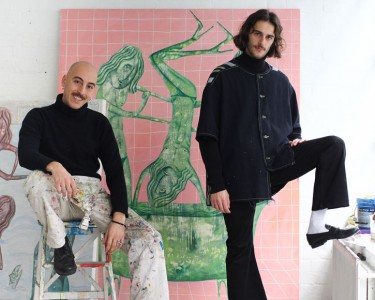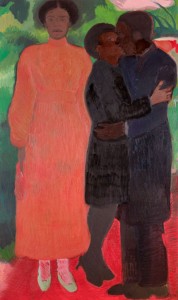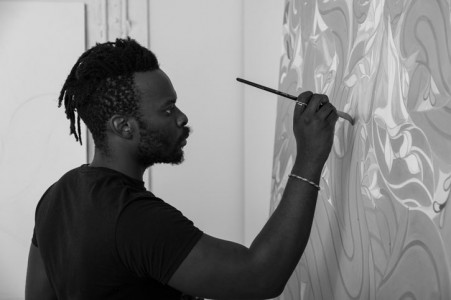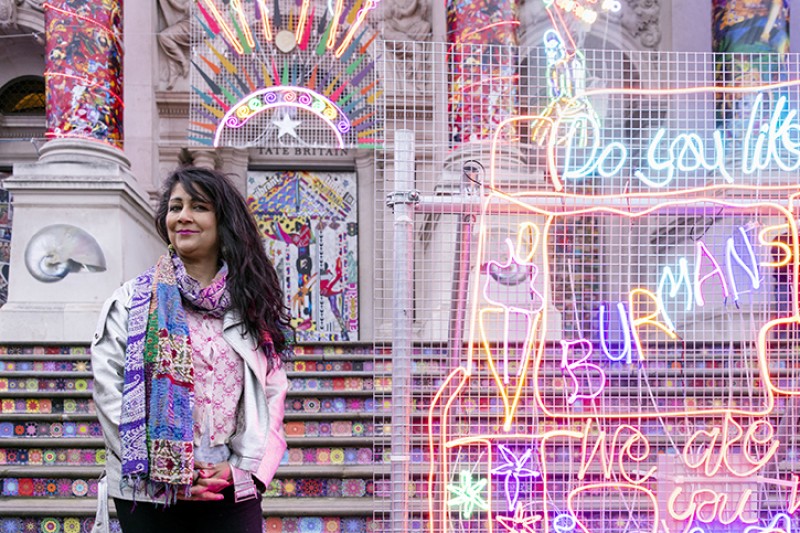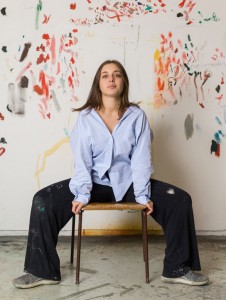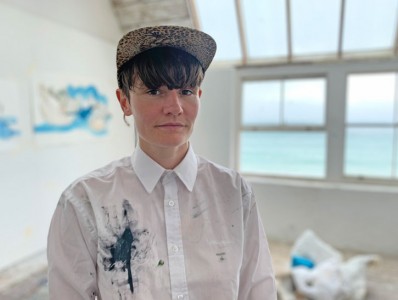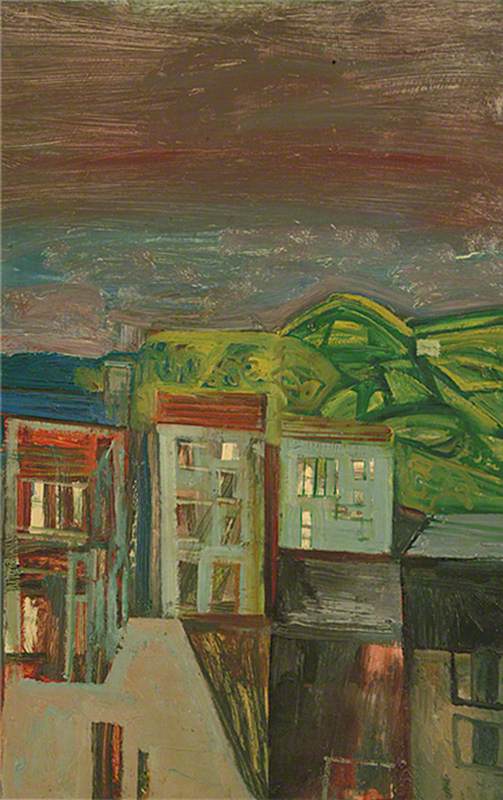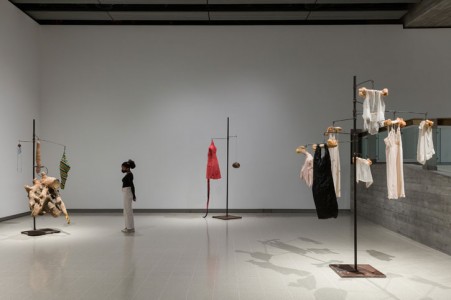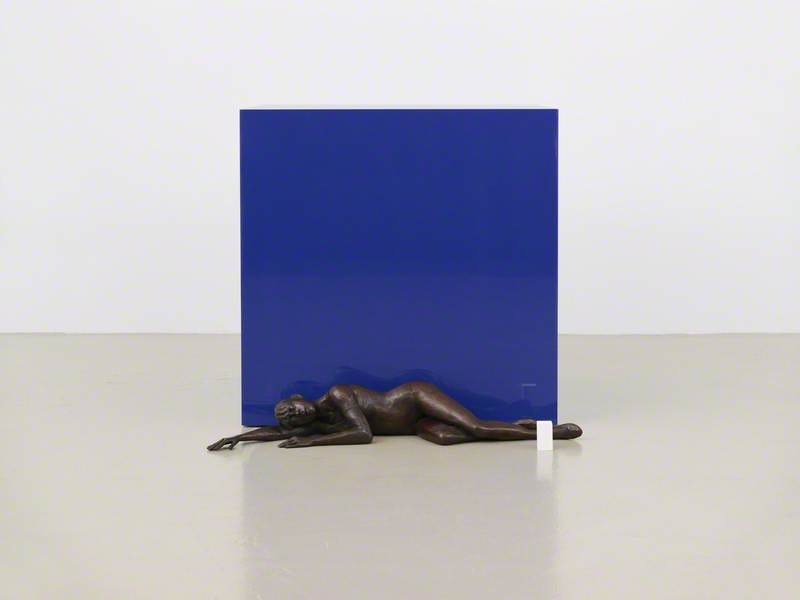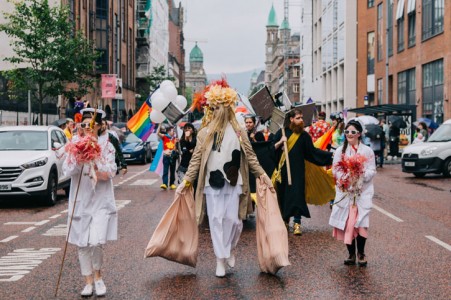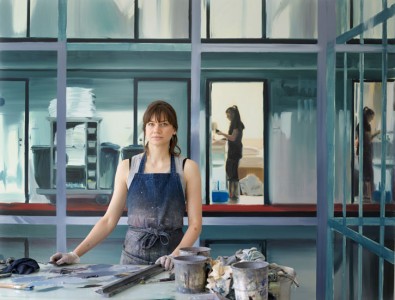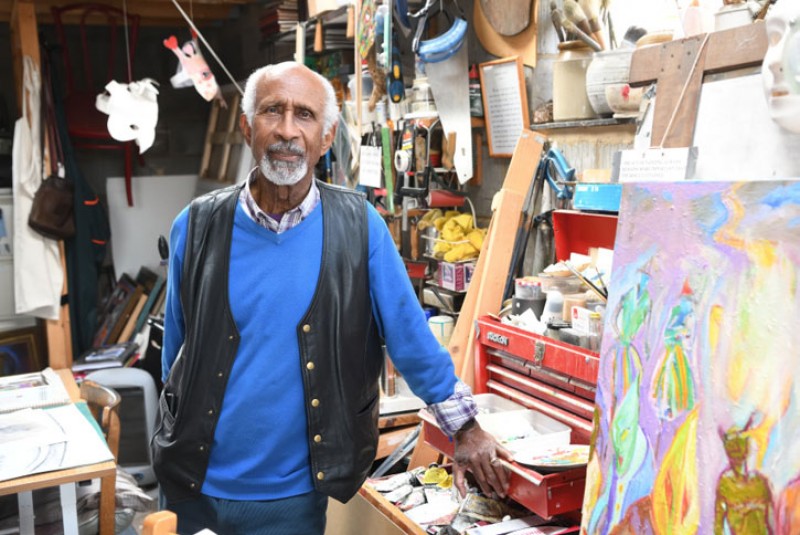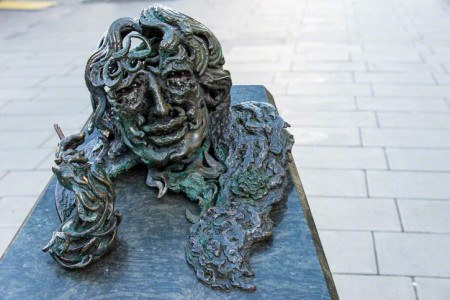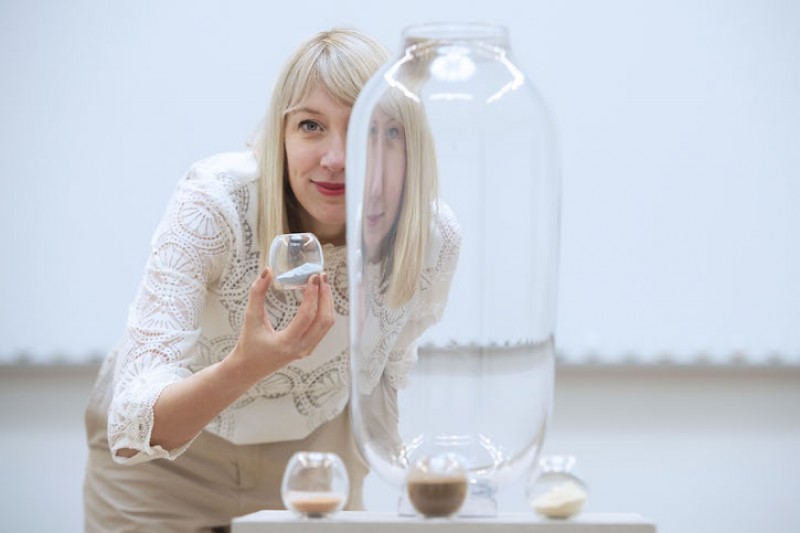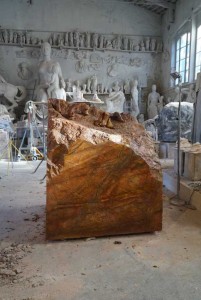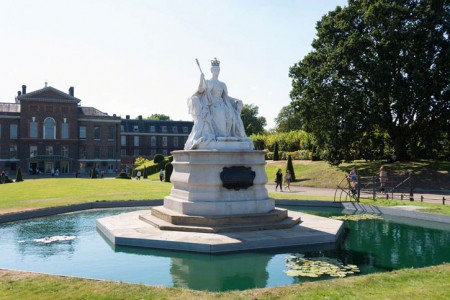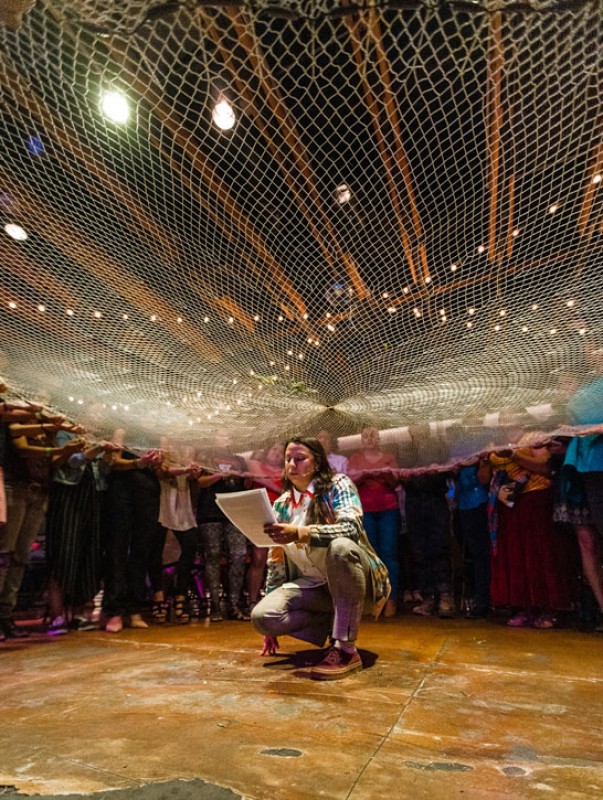In the series 'Seven questions with...' Art UK speaks to some of the most exciting emerging and established artists working today.
Miquel Barceló began his career as a painter, though over the last five decades his work has evolved across many media: relief-like sculptures, installation, and ceramics. Today, he is one of Spain's most important artists, and his work continually pays homage to his country's artistic lineage – Goya, Picasso, Joan Miró and Antoni Tàpies (the last two were his friends). For the first time the artist exhibits his ceramic work in the UK, at Thaddaeus Ropac's 'Ceramics' (until 19th February 2022).
Peix que fui
2020–2021, ceramic by Miquel Barceló (b.1957) 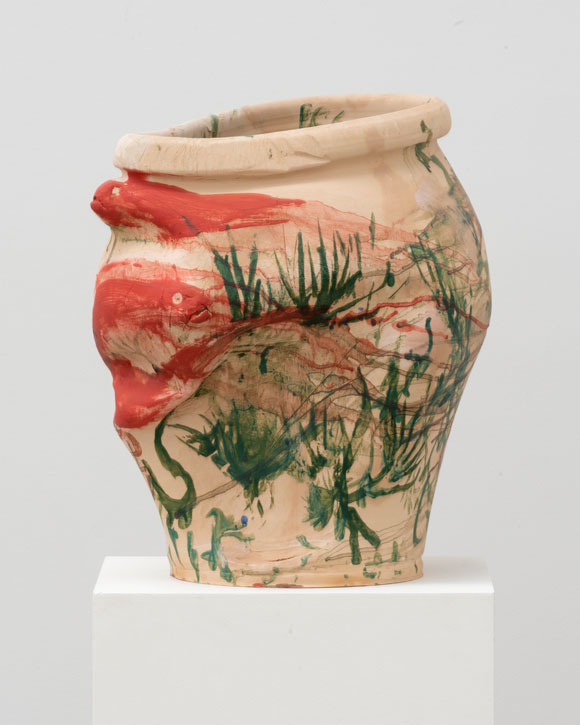
Born in Mallorca during the era of Francoist Spain, Barceló followed in the footsteps of his mother who regularly painted the surrounding coastal areas of the Mediterranean island. Narrowly avoiding military service, he left his native country to travel overseas, where he developed his authentic aesthetic and richly textured paintings, sculptural reliefs and ceramics. Some of his most striking and ambitious projects include the ceiling of the Palais des Nations, the EU headquarters of the United Nations in Geneva (dubbed the 'twenty-first century's Sistine Chapel') as well as the interior of the gothic Palma Cathedral, known as 'La Seu'.
Ceiling of the Human Rights and Alliance of Civilization Chamber, Palais des Nations
ceiling sculpture by Miquel Barceló (b.1957), Palais des Nations, United Nations, Geneva, Switzerland 
Today, he lives and works as an artist-nomad, shifting between his studios in Paris, Mallorca, and Mali, where he constantly seeks inspiration from his surrounding environments, in particular, rural or coastal areas characterised by rich wildlife.
Continue scrolling to read my interview with the artist.
Lydia Figes, Art UK: You began your career as a painter, but do you remember your first encounter with ceramics?
Miquel Barceló: It was in West Africa, when I moved to Mali in the late 1980s. Back then, I felt like I needed to get out of Europe. I had never experimented with ceramics before this point in my life, I was mostly working with painting, watercolours and etchings. I created some sculptures in plasters – sometimes in bronze.
When I got to Mali, I realised it was too windy to paint. My frustrations led me to become close to the community – the Dogon people. They ended up teaching me their ceramic techniques that date back to prehistoric times. Together we would collect the clay from different sites and caves in the area – we'd combine the clay with animal dung. It's a very dry kind of clay that's different from the sort you'd get in Europe. No tools are used to shape the ceramics, only occasionally a soft stone. Because it's so dry and you bake them in very high temperatures (up to 300 degrees) the works can crack and break.
Installation view of 'Miquel Barceló: Ceramics' at Thaddaeus Ropac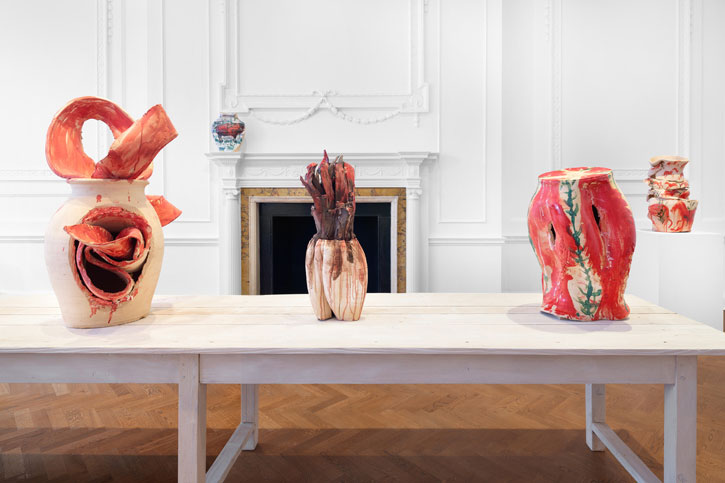
In Mali the tradition is that the women create ceramics and the men are the tailors. To the amusement of the locals, I worked with the women – they taught me everything about the traditions and processes of Dogon ceramics. I stood out as the only European, and I became friendly with the community. I was so struck by the beauty of the place, the people, the culture. I ended up staying in Mali for over 35 years – everything I've learned over the past 30 years I learned there.
Although my practice shifted towards ceramics, I don't see great divisions between ceramics and painting. The technique is different, but in the end it's really the same. It's the galleries and museums who place more value on paintings. For me, sometimes a small watercolour is more impactful than a large fresco. In the same way that in life, one hour might be more significant than one week.
Installation view of 'Miquel Barceló: Ceramics' at Thaddaeus Ropac
2020–2021, ceramic by Miquel Barceló (b.1957) 
Lydia: You allow chance and natural processes to shape your practice. Can you tell me more about why and how this approach informs your work?
Miquel: I'm still a country boy, I was born in 1957, but in my village Felanitx in Mallorca, life there was probably quite similar to life there in 857 AD. I lived around animals and the sea – there was little technology, no television. I still continue to feel very connected with that way of life, and in Mali I enjoy being around the donkeys on the street. This kind of life – away from cities and people – suits me. But life is very tough and complex in Mali now – it's not the simple paradise it once was.
Lydia: Do you consider yourself an ecologically minded artist?
Miquel: Yes absolutely – all my life I have been supporting ecological or environmental groups. In 1977 I led an occupation of an uninhabited island off Mallorca, known as Sa Dragonera, to avoid the construction of a city on this island.
I remember my first year in Mali, I had a collection of big watercolours. When I returned home, the termites had eaten my works – there were huge holes. At first I was devastated, but then realised that it was a good thing – they had added to the work rather than destroyed it. This kind of thing doesn't happen in Paris.
Rhododendron
2019, ceramic by Miquel Barceló (b.1957) 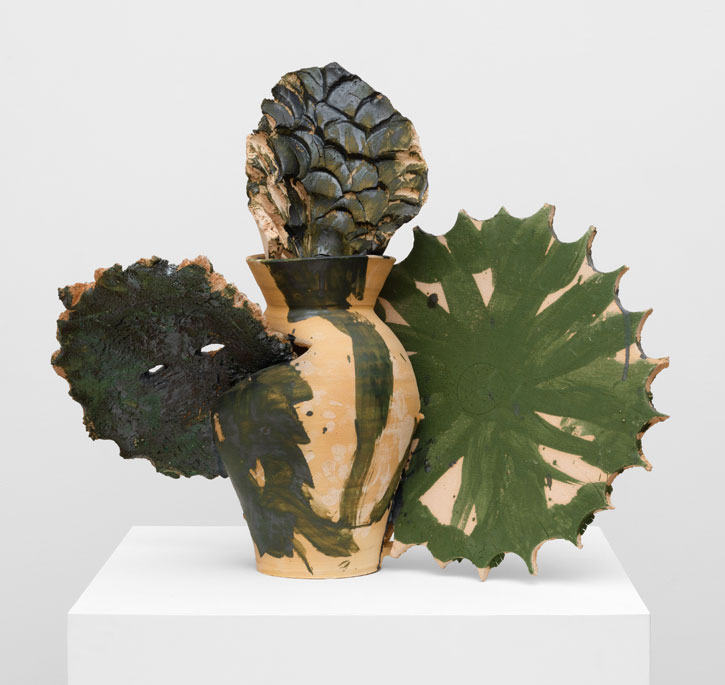
Lydia: Your work includes motifs of animals, and imagery and symbolism that celebrates animal life. Do you live around lots of animals?
Miquel: I live on a farm in Mallorca. I have bulls, lambs, donkeys, chickens, pigs – a lot. I'm around more animals than people. If I could create a hierarchy, it would be animals, not humans at the top. Aquatic animals, fish and animals in general often appear in my works.
Lydia: Can you tell me more about your upbringing in Mallorca. You grew up around an artistic community and were close with Joan Miró?
When I was very young, 12 or 13, I was creating en plein air landscapes. My mother was a painter and many of her friends too. They invited me to paint with them in the countryside close to the sea, or in the mountains. It was a kind of game for me – a way to be amused. But then I started to take it more seriously when I was about 17. I started to hate all those Mallorcan styles of paintings – they resembled the packages you would see on the pâtisserie. They weren't art. Miró was the only one creating something new. He was very happy to meet me and invite me to his home.
I think the reason I travel so much now is that under Franco, it was difficult to leave – you only got a passport if you did military service. I grew up with that frustration, of feeling trapped. Although I love Mallorca, it was that feeling of entrapment that pushed me away. Now the island has been destroyed by the tourist industry, all those great big hotels. It's hard to see that day after day in the beautiful place where you grew up.

Lydia: You end up destroying a lot of your work, yet you also seem to embrace failure. Can you tell us more about this way of thinking and treating the work?
Miquel: Cracking and breaks are part of the nature of ceramics – it's part of the medium's language, the nature of the work – so yes the cracks are always welcome. It's an indication of time.
For my work in the interior of the Cathedral of Santa Maria de Palma – my vision was to build up the ceramic into cracked squares. When we started it was winter, and the wall was one fresh spread of ceramic. But as it became hotter, the dramatic cracks started to emerge. The breaks were spectacular – like a spider's web.
Detail of the interior of Cathedral La Seu (right apse)
2001–2006, ceramic polychromatic mural by Miquel Barceló (b.1957) 
Lydia: Who is the most interesting artist who you had the chance to meet and learn from?
Miquel: I never had the chance to meet Picasso, but it feels like he is someone very close to home. I was friends with an American writer called Paul Bowles. He inspired me a lot, even though he wasn't a visual artist. I knew Tapiès well, and we spent a lot of time together. And in New York, I was friends with Andy Warhol – he was very inspiring.
Lydia Figes, Content Editor at Art UK
'Ceramics' at Thaddaeus Ropac, London is on until 19th February 2022
